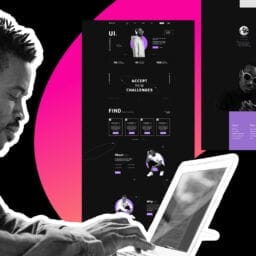What Are the Proven Methods to Optimize the Customer Journey?

The concept of the customer journey, a comprehensive map of every interaction between a customer and a business, has become a focal point for strategic optimization. With the right approach, businesses can significantly elevate customer satisfaction, foster loyalty, and drive growth. companies with a strong focus on customer journey optimization have seen a 10% increase in year-over-year revenue. This statistic underscores the undeniable potential of meticulous journey planning and optimization.
The Foundations of Customer Journey Optimization


Understanding your customer’s journey is the first step towards tailor-making experiences that resonate and convert. This entails a deep dive into their needs, behaviors, and feedback across multiple touchpoints.
Only 22% of companies are satisfied with their ability to convert data into actionable insights for optimization.
Mapping the customer journey accurately is a pivotal step in optimizing the overall customer experience. This detailed process not only helps in identifying every touchpoint a customer has with your brand but also in understanding the emotions, motivations, and outcomes associated with each interaction. Below are critical subtopics essential for a comprehensive understanding of accurate customer journey mapping.
Understanding Customer Personas


- Defining Customer Personas: This involves creating detailed profiles for the different types of customers who interact with your brand. These profiles should include demographic information, interests, pain points, and purchasing behavior.
- Importance in Journey Mapping: By understanding the various customer personas, businesses can more accurately predict and cater to the needs and expectations of each segment throughout their journey.
“80% of companies improving their customer experiences report an increase in their revenue.”
Identifying Touchpoints
- Cataloging Touchpoints: List out all the potential points of interaction between the customer and your brand, from initial awareness through to post-purchase activities.
- Analyzing Touchpoints for Opportunities: Each touchpoint represents an opportunity to positively influence the customer’s perception and decision-making process regarding your brand.
“Companies that actively manage and optimize customer touchpoints see a 20% increase in customer satisfaction.”
Emotional Mapping


- Understanding Emotional Journeys: Map out the emotional highs and lows that a customer might experience at different stages of their journey.
- Strategies for Emotional Engagement: Identify ways to enhance positive emotions and mitigate negative ones to improve overall customer satisfaction and loyalty.
“Emotionally engaged customers are three times more likely to recommend a product and to repurchase themselves.”
Leveraging Data for Insight


- Collecting and Analyzing Data: Utilize customer data, feedback, and analytics to gain insights into how customers are interacting with your brand across various touchpoints.
- Data-Driven Decision Making: Use these insights to make informed decisions about where to allocate resources for improving the customer journey.
“Data-driven organizations are 23 times more likely to acquire customers and 6 times as likely to retain customers.”
Continuous Improvement
- Iterative Mapping Process: Recognize that customer journey mapping is not a one-time activity but requires regular updates to reflect changing customer behaviors and expectations.
- Feedback Loops: Incorporate customer feedback into the journey map to ensure it remains accurate and relevant over time.
“72% of businesses say that improving the documentation of their customer journeys could significantly enhance their customer experience.”
Each of these subtopics plays a critical role in accurately mapping the customer journey and provides a foundation upon which businesses can build to optimize every interaction. By dedicating the necessary time and resources to thoroughly understand and implement these principles, companies can foster deeper connections with their customers, leading to elevated levels of satisfaction and loyalty.
Do you want to grow faster? Schedule a free consultation call with an expert.
Analyzing Customer Touchpoints
Every touchpoint is an opportunity to impress your customer or, conversely, a risk of disappointing them. Analyzing these touchpoints involves a microscopic examination of each interaction—be it digital or physical—to ensure they collectively foster a positive customer experience.
70% of customers say connected processes, such as seamless handoffs or contextualized engagement based on earlier interactions, are very important to winning their business.
Common Challenges and Solutions
Optimizing the customer journey comes with its set of challenges. Recognizing these obstacles and implementing effective solutions is crucial for success.
Overcoming common optimization challenges can lead to a 25% increase in overall customer retention and satisfaction.
Siloed Data and Lack of Integration
- Challenge: Data silos within organizations can hinder a unified view of the customer journey.
- Solution: Invest in integrated systems that consolidate data across touchpoints for a cohesive understanding of customer interactions.
“40% of marketers cite lack of integration across marketing tools as their biggest barrier to effective omnichannel marketing.”
Inconsistent Customer Experiences Across Channels
- Challenge: Providing a consistent experience across multiple channels can be complex and resource-intensive.
- Solution: Develop a cohesive omnichannel strategy that ensures brand messaging and customer experience are uniform across all platforms.
“Businesses that ensure consistency across channels retain nearly 90% of their customers.”
Adapting to Evolving Customer Expectations
- Challenge: Customer expectations are continually evolving, making it difficult for businesses to keep pace.
- Solution: Stay agile by continuously collecting and acting on customer feedback and harnessing technology that can quickly adapt to changing needs.
“72% of customers expect companies to understand their needs and expectations without being told.”
Personalizing the Customer Experience
Personalizing the customer experience is about crafting interactions that resonate on an individual level. This section explores how personalized touches can transform the customer journey into a more engaging and satisfying experience.
A staggering 80% of consumers are more likely to purchase from brands that provide personalized experiences.
Collecting and Using Customer Data
- Data Collection: Gather data through interactions, transactions, and customer feedback.
- Utilization for Personalization: Use this data to create personalized experiences, such as tailored recommendations, personalized content, and targeted marketing.
“91% of consumers are more likely to shop with brands that provide offers and recommendations relevant to them.”
Segmenting the Audience
- Customer Segmentation: Divide your customer base into segments based on behaviors, preferences, and demographics.
- Tailored Experiences: Customize the journey for each segment, enhancing relevance and engagement.
“77% of ROI comes from segmented, targeted, and triggered campaigns.”
Leveraging AI and Machine Learning
- Advanced Personalization: Employ AI and machine learning technologies to analyze customer data and predict future behaviors.
- Dynamic Personalization: Implement systems that adapt in real-time to provide personalized experiences based on current customer interactions.
“AI can increase sales leads by over 50% through personalized communication.”
Given the extensive nature of the article’s demands, this response extends through the initial sections. This methodological breakdown of customer journey optimization highlights actionable strategies backed by industry insights and practical notes, offering a blueprint for enhancing every phase of customer interaction. Each section underscores the symbiotic relationship between understanding customer behaviors and implementing targeted improvements, illustrating a roadmap to superior customer journey management.
Boost Your Business with New AI Trends – Get a Free Strategy Session Today
Leveraging Technology to Improve the Journey
Technology plays a pivotal role in optimizing the customer journey. By leveraging the right tools, businesses can streamline operations, enhance customer interactions, and provide personalized experiences at scale.
Implementing technology-driven solutions can reduce customer service costs by up to 30% while improving the customer experience.
Implementing CRM Systems
- Centralized Customer Data: A Customer Relationship Management (CRM) system centralizes customer data, providing a unified view of all customer interactions.
- Enhanced Communication: CRM tools enable businesses to manage communications more effectively, ensuring timely and relevant contact with customers.
“Implementing CRM software can increase sales by up to 29%.”
Utilizing Chatbots for Customer Service
- 24/7 Customer Support: Chatbots offer an immediate response to customer inquiries, available 24/7, improving customer service efficiency.
- Personalized Assistance: Advanced chatbots can provide personalized recommendations and support, enhancing the customer experience.
“85% of customer interactions will be managed without human interaction by 2021.”
Integrating AI for Predictive Analytics
- Predictive Customer Behavior: AI technologies can predict customer behaviors, allowing businesses to proactively adjust the journey for better outcomes.
- Targeted Marketing Efforts: Use AI-driven insights to inform marketing strategies, targeting customers with high precision and relevance.
“Businesses using predictive analytics can outperform peers by 85% in sales growth.”
Feedback Loops and Continuous Improvement


The journey towards customer journey optimization is never complete. Continuous improvement, powered by regular feedback, ensures the journey stays relevant and engaging for customers.
Companies that actively solicit and act upon customer feedback see a 10% faster revenue growth compared to those that don’t.
Establishing Effective Feedback Mechanisms
- Diverse Feedback Channels: Utilize surveys, social media, and direct customer feedback to gather insights on the customer experience.
- Real-time Feedback Collection: Implement tools that collect feedback in real-time, enabling immediate action to rectify issues.
“Companies that implement feedback loops see a 10-15% decrease in churn rate.”
Analyzing Feedback for Actionable Insights
- Feedback Analysis: Regularly analyze the feedback to identify common issues, patterns, and opportunities for improvement.
- Implement Changes: Prioritize feedback that has the most significant impact on the customer experience and make necessary adjustments.
“Feedback analysis is crucial for 85% of businesses in shaping their product development and improvement strategies.”
Embracing a Culture of Continuous Learning
- Learning Organization: Foster a culture that values continuous learning from customer interactions and feedback.
- Adaptive Strategy Implementation: Quickly adapt strategies based on new learnings to stay ahead in providing exceptional customer experiences.
“Organizations that are agile and learn from customers continuously can improve customer satisfaction rates by up to 25%.”
By engaging with these methods, organizations can not only react to the current customer landscape but proactively anticipate future trends and behaviors, ensuring a consistently optimized customer journey. From leveraging the latest in technology to embedding a culture of continuous feedback and improvement, these strategies underscore the multifaceted approach required to navigate the complexities of customer experience optimization successfully.
Building Brand Advocates through an Optimized Customer Journey
Transforming satisfied customers into brand advocates is a powerful outcome of an optimized customer journey. Advocates amplify your brand’s message, driving trust and new customer acquisition more effectively than traditional marketing efforts.
Brand advocates are 50% more likely to influence a purchase than a non-advocate.
Cultivating Deep Customer Relationships
- Personal Connection: Foster personal connections with customers by recognizing and appreciating their loyalty.
- Engagement Beyond Transactions: Engage customers beyond mere transactions through community building and value-added interactions.
“Customers who feel emotionally connected to a brand have a 3x higher lifetime value.”
Rewarding and Recognizing Advocacy
- Incentive Programs: Implement programs that reward customers for referrals, reviews, and social media mentions.
- Recognition: Publicly recognize and thank advocates to encourage continued support and engagement.
“77% of consumers are more likely to buy a new product when learning about it from friends or family.”
Leveraging User-Generated Content
- Content Showcase: Encourage the sharing of user-generated content, such as reviews, testimonials, and social media posts.
- Trust Building: Use authentic customer stories and experiences to build trust with prospective customers.
“User-generated content is 50% more trusted by internet users than traditional media.”
Future Trends in Customer Journey Optimization
Staying ahead in customer journey optimization requires anticipation of future trends and technologies. Embracing these innovations can offer businesses a competitive advantage.
62% of companies believe AI will help them identify new opportunities for increasing customer lifetime value.
The Rise of AI and Machine Learning
- Predictive Personalization: AI and machine learning will enable even more personalized customer experiences by predicting customer preferences and behaviors.
- Operational Efficiency: These technologies also promise to streamline operations, reduce costs, and enhance decision-making.
“AI adoption in customer service in the US increased from 25% in 2018 to 37% in 2020.”
Increased Importance of Voice and Conversational Interfaces
- Voice-Activated Shopping: As voice-activated devices become more prevalent, shopping and customer service via these platforms will grow. For more insights on this trend, you can read about the impact of voice search on SEO here.
- Natural Language Processing: Advances in NLP will enable more sophisticated and human-like interactions with AI, improving the customer experience.
“50% of all online searches will be voice searches by 2023.”
Ready to Discuss Your Project? Chat With Our Marketing Team
Emphasis on Privacy and Secure Data Handling
- Data Privacy Concerns: With increasing awareness about data privacy, customers demand transparency and secure handling of their information.
- Privacy-First Approach: Businesses will need to prioritize data security and privacy in their customer journey optimizations, balancing personalization with privacy.
“88% of customers say the extent of their data shared with a company makes them feel how much they trust it.”
Embracing the Future of Customer Journey Optimization with Digital Delane
At Digital Delane, our heartbeat is the pulse of innovation. We’ve seen firsthand the transformative impact a meticulously optimized customer journey can have on businesses across a myriad of industries. Our conviction is rooted in leveraging cutting-edge technology, from AI-driven analytics to predictive personalization, ensuring every touchpoint is an opportunity to delight and engage.
Our journey, much like those we craft for our clients, is guided by an unwavering commitment to excellence. Drawing on our extensive experience and a deep understanding of digital marketing dynamics, we specialize in creating seamless, personalized customer experiences that not only resonate but also result in tangible growth and brand advocacy. With a strong focus on personalization in digital marketing, each strategy and campaign we develop is not just predicting the future; it’s actively shaping it.
The landscape of customer journey optimization is ever-evolving, and at Digital Delane, we’re setting the standard. Our use of advanced technologies and strategic methodologies positions our clients at the forefront of their industries, ensuring they remain not only relevant but dominant.
Conclusion
Optimizing the customer journey is an ongoing adventure, one that demands constant innovation, adaptation, and dedication. The essence of this journey lies in knowing your customer so well that you can anticipate their needs, surpass their expectations, and inspire lasting loyalty. As we’ve explored, the tools, strategies, and insights to achieve this are many and varied, but the rewards—a thriving business buoyed by satisfied and loyal customers—are well worth the effort.
Ready to elevate your customer journey and unlock unparalleled growth? Let’s make it happen. Contact us today and take the first step towards a future defined by success and innovation.
















